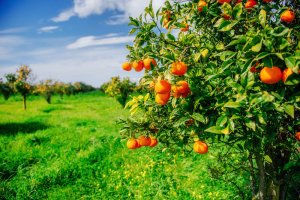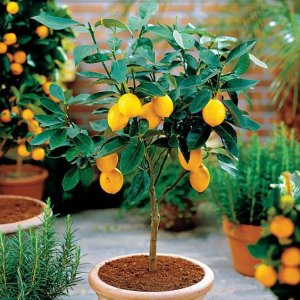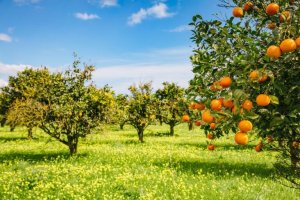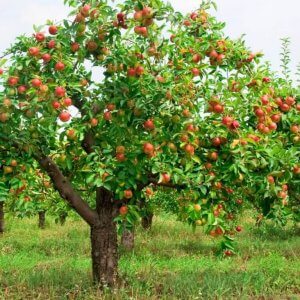Growing Your Own Fruit Trees - The Basics

Fruit trees can be incorporated into your backyard, or grown in their own separate orchard. Unlike other plants, they can produce fruit year after year – if looked after properly, of course.
When it comes to growing your own fruit tree, you have to make sure to choose the right one. For example, you’ll need to think about the types of fruit you want to grow, and how much fruit you want. It’s also important to choose species that can adapt well to the climate in your region.
Though it might seem obvious, the best way to know if a fruit tree will grow properly in your yard is to consult a professional and take a look at the species that grow naturally in your area.
Fruit trees – choosing the right soil

As well as the weather, the soil is another important factor to bear in mind. Good soil is essential and should be your top priority.
The basic things you need to look for when choosing the right soil conditions are good water drainage, sufficient depth, and soil rich in organic material and mineral nutrients. It’s best to avoid limestone or saline soils.
If you don’t have these exact conditions in your yard, you can improve the soil quality by adding the necessary elements. At the same time, you’ll need to choose an area of your garden that receives plenty of direct sunlight.
Let’s go shopping!
When it comes to buying your saplings, it’s best to head to garden centers that specialize in fruit trees. You’ll also need to make sure the trees look healthy, with no signs of bug infestations or disease.
You have the option of buying bare-root or potted saplings. Before we go any further, let’s take a quick look at what exactly these two terms mean:
- Bare-root fruit trees: these are usually the cheapest option, but there is a small chance that they won’t take root when you plant them in your garden. Plus, they’re only available in winter and fall (which is the only time they can be planted).
- Potted fruit trees: though they are slightly more expensive, these can be purchased all year round. Their main advantage is they guarantee the tree will grow properly once planted.
Fruit trees – fertilizer

These trees need to absorb large amounts of nutrients in order to produce plenty of fruit. To do this, you’ll need to provide your plants with plenty of fertilizer, known as basal dressing.
Every year, you’ll also need to apply additional layers of seasonal fertilizer to make sure they keep producing fruit and can continue to grow healthily. Let’s take a look at three different fertilizer options:
- Organic fertilizer such as compost or manure. This is recommended during cold weather, especially in winter.
- Granular mineral fertilizers containing nitrogen, phosphorus, potassium and other elements.
- Fertirrigation via a drip irrigation system containing fertilizer.
Growing fruit trees: pruning
Pruning is a basic part of tree care, helping to achieve a balanced shape, and keeping your plants in great condition. This is also the best way to avoid the phenomenon known as alternate bearing, which occurs when a tree produces large amounts of fruit one year, and almost nothing the next.
We recommend pruning your tree toward the end of the fall or the start of winter. However, some species can be pruned at the end of spring (known as green pruning), or even in the middle of summer, during July and August.
Green pruning can be really useful, as it allows you to remove any less productive branches, and promote the growth of more productive ones.
Fruit trees – some useful advice

If you’ve decided to plant your own fruit trees, keep the following tips in mind. You may find they come in handy:
Spacing
If you choose to plant several different species, you must make sure to leave plenty of space between them to allow them to grow and develop properly. Though this might seem obvious, it’s all too easy to forget.
The distance between one tree and another will depend on the species, and whether or not the plants are fully grown at the time of planting. For example, some citrus fruit trees will require around 5 ft of space between them.
If you decide to alternate between different species of fruit trees, you’ll need to increase this distance a little.
Potted fruit trees
If you don’t have much space, you can actually use planters or other containers to grow your fruit trees. However, this is only suitable for growing smaller, more compact plants with shallow roots.
You can also buy dwarf varieties of some fruit trees that are easy to grow in pots. These include apple, cherry, lemon, plum and peach trees.
We hope you found this article interesting, and it’ll now be a little bit easier for you to choose the right trees for your yard. Let us know which trees you decided to plant!








